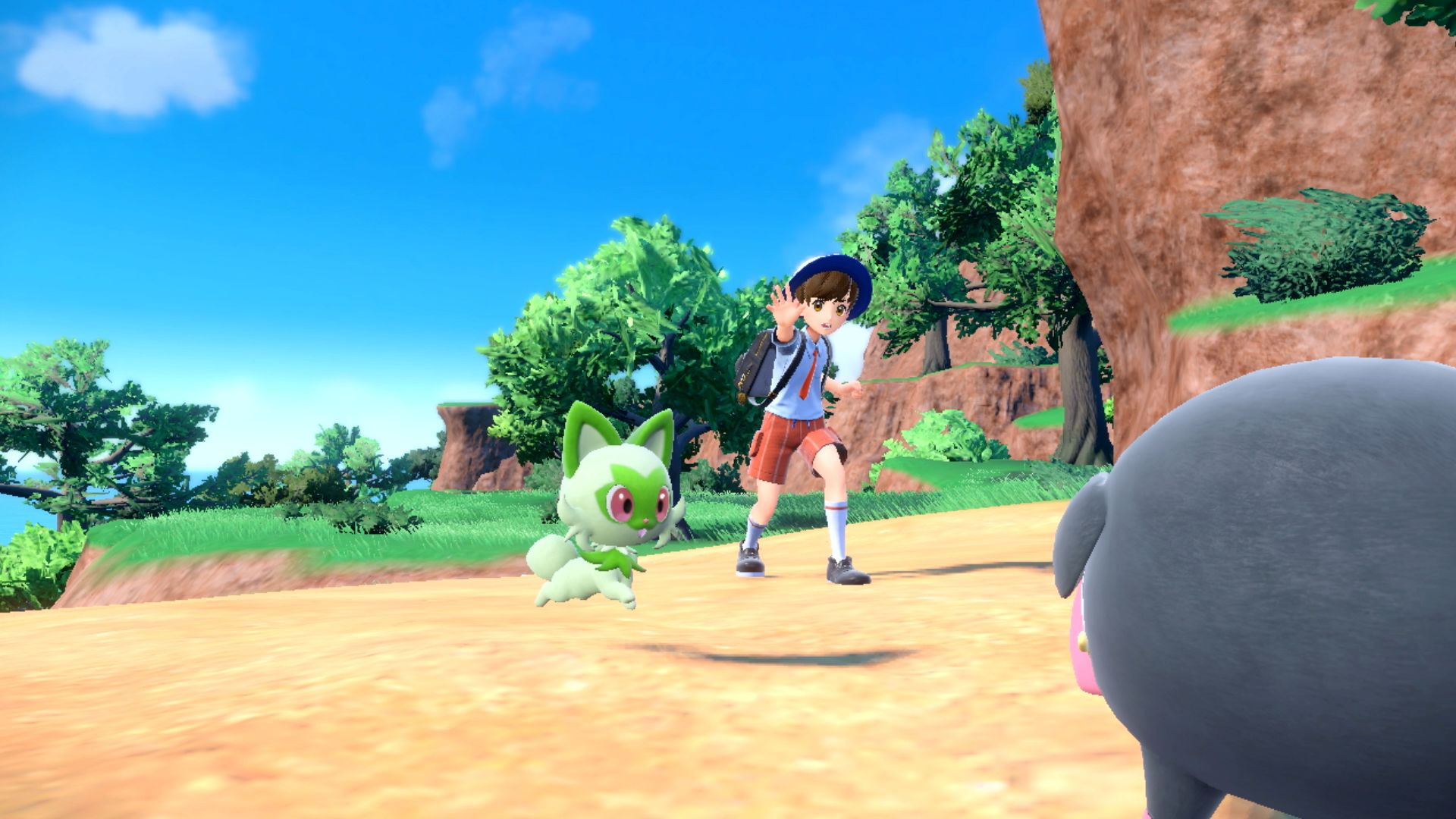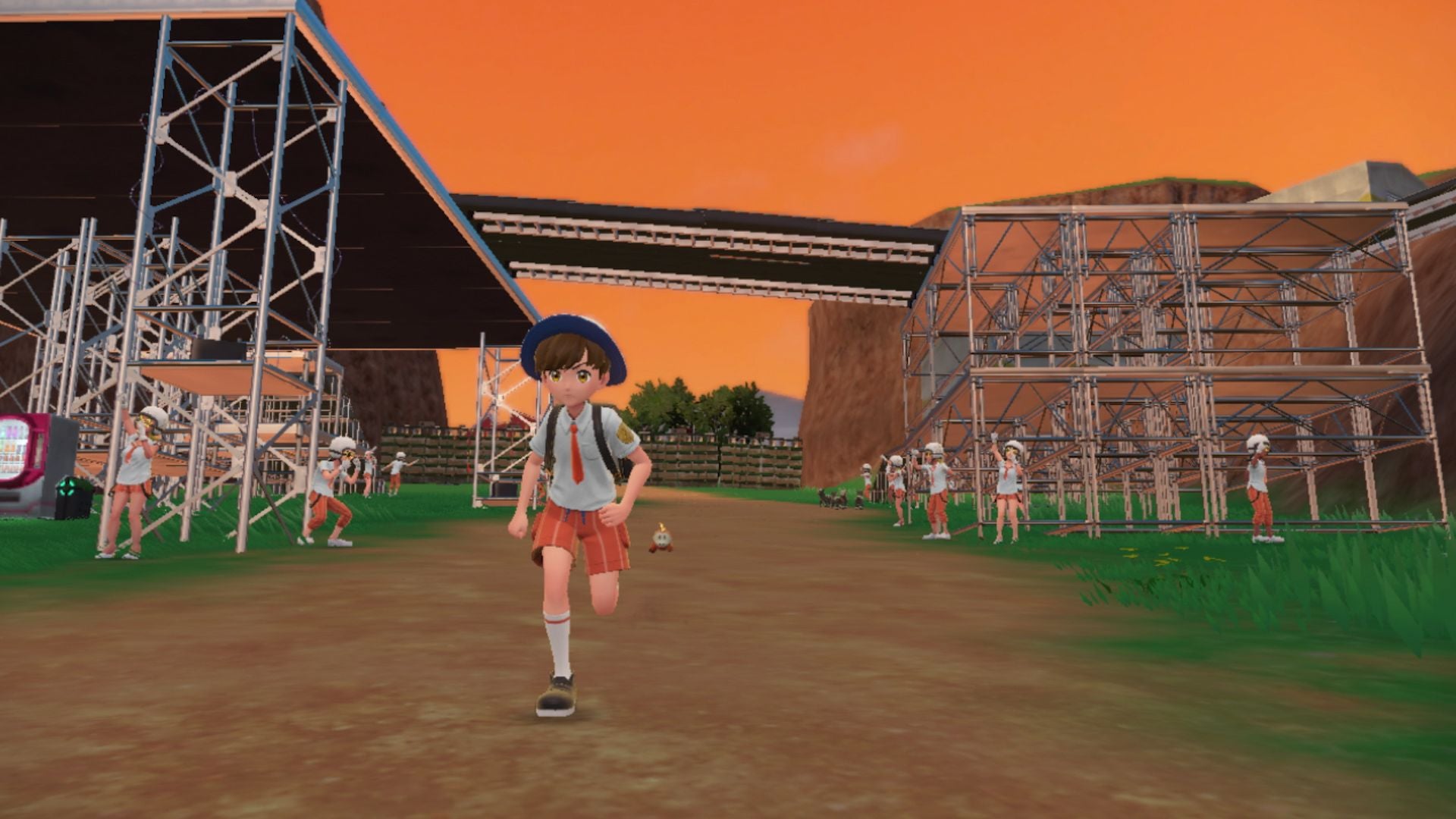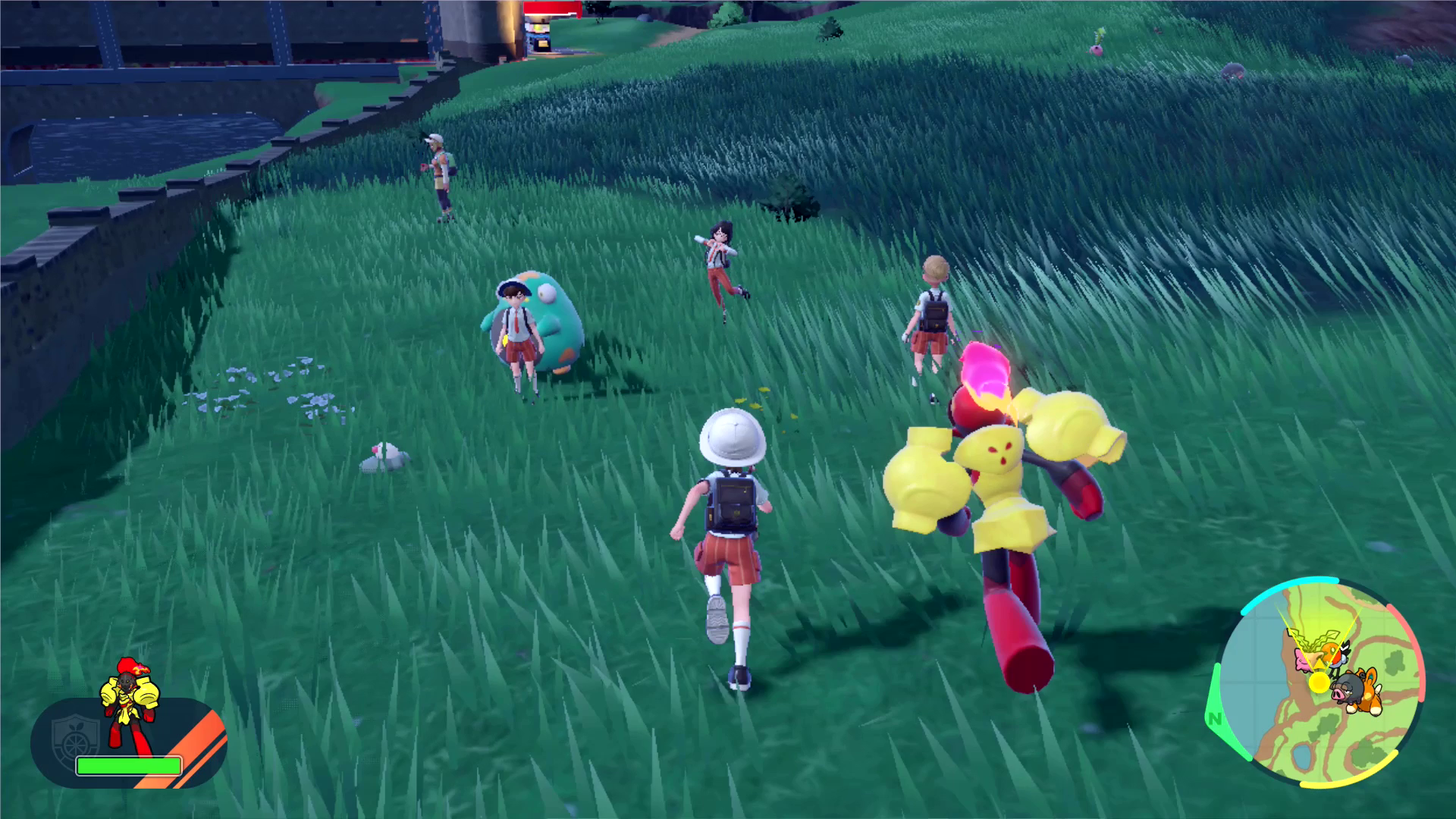I like it just as much as I did Pokemon Legends: Arceus – which I described in that review as the best Pokemon game in 20 years. So let me say it plainly: Scarlet & Violet are now the joint-best Pokemon since the Game Boy era. High praise indeed. To be honest, I wasn’t entirely convinced that Pokemon Scarlet & Violet would impress me all that much. I’d found the previous generational shift, Sword & Shield, stuffed with interesting ideas, but also too often flawed. I figured this might be similar, a fact not helped by the fact that in the interim we got Legends, a spin-off so thoughtful and so experimental that it quickly made the traditional Pokemon formula feel obsolete. Going into the review period, I was convinced of one thing: no matter how much I liked this game, I’d end up missing some of that spin-off’s changes. But then something magical happened: I didn’t. Scarlet & Violet return to the same Pokemon traditions that fans have been familiar with since the 90s. You, a young trainer, go on a journey across a new region of the Poke-world, and set out to become Champion by toppling eight type-themed gyms and then beating the ‘Elite Four’, the region’s most powerful Pokemon trainers. That’s still here. The unique, rapid-fire Pokemon catching found in Legends Arceus is gone, replaced with the traditional battle attrition method. But exploration – which was key in that game – remains the focus here, too. That’s how this game differs, and from where its upheaval of Pokemon’s traditions begins. The only direction the game gives you is on its map screen, where you’re presented with three storylines that ultimately comprise eighteen different objectives. Victory Road is the classic Pokemon Gym leader challenge. Starfall Street chronicles your battles with this game’s rival group of nefarious Pokemon trainers, Team Star. Finally, Path of Legends asks players to help a friendly NPC unravel the mystery of ‘Titan’ Pokemon – giant forms of various species of Pokemon – by tracking and battling them. To some extent these storylines overlap and converge, and all link back to your position as a student at an academy that sits in the center of the map, Hyrule Castle style. The point is that you can do any of these tasks in any order you like – so if you want to tackle all eight gyms, then all five enemy bases, then all five Titans, in difficulty order, you can. Or you could mix and match. Some missions unlock new traversal abilities for the version-dependent Legendary Pokemon who is a constant buddy and your steed, unlocking more swift exploration of the world. Other than that, though, the game very much leaves you to it. It’s a small change, but it’s surprisingly freeing. As a game designed for kids first, Pokemon has often been very talkative and hand-holdy, to the point where I actually think it’s probably even a bit much for children. It gets boring. An early criticism of Scarlet & Violet is that it’s the same – it takes ages to get going, and the protagonist’s mobile phone is constantly buzzing with people looking to tell you things, or (most excruciatingly) repeat something you already know. This makes the first few hours a slog, but once things open up… man, it’s refreshing. A real breeze. Game Freak could still do with reigning it in a little, of course. I don’t need my phone to buzz to tell me that I’m approaching a Team Star base every time I approach a base. I obviously know; just a warning the first time I approach one of those missions would do the trick. Just let me get on with it. In little things like this, you can sense the developer grappling with understanding open world game design. You can tell this is their first – or second, if you count the ‘open zone’ design of Legends. But equally, I’m surprised with how well the world fits together in general. Another area where you can sense a struggle against the principles of open world design is sadly in the performance. Pokemon Scarlet & Violet actually do run okay, with nasty-but-not-unforgivable frame drops here and there. But it’s the cost that relatively decent performance comes at that’s most shocking. The most common thing is frame culling (this is my term; our buds at Digital Foundry say it can also be described as ‘time slicing’, and say it’s done to reduce CPU overhead). What it is, though, is when frames of animation are removed from items in the distance, resulting in stilted movement. We saw a lot of this in Legends Arceus, where you’d see a Pokemon flapping its wings off in the distance at like 5fps. It took you out of it a bit, but it wasn’t so bad. Stuff was far away. It’s a common technique; the problem is that Scarlet & Violet use it poorly. Here, this can happen alarmingly close to the screen. Probably the maddest instance you can see is the classroom at school, where kids sitting one or two desks back are swinging their legs back and forth or resting their head on their hand, swaying this way and that looking like a damn slide show. These characters are practically in the foreground. This stuff is present out in the open world, and it really makes an otherwise pretty good looking and polished game feel cheaper than it is. Then there’s just the usual sort of open-world jankiness. Part of the appeal of the open world is next to no load screens or transitions; there’s transitions entering and exiting gyms and the odd cutscene, but that’s about it. Sometimes, this means that less is more, like removing shop interiors in favor of just having ‘entering’ a shop pop open a menu. It’s a loss, but in context it streamlines everything and works tremendously well. Sometimes stuff breaks, though. Pokemon now evolve out in the open world, for instance, not on a separate screen, and so I had two separate evolutions clip through the environment and take place in the void, just ‘cos of where I was when the evolution triggered. The battle camera sometimes suffers similarly; since battles can take place anywhere, every now and then you’re in close enough quarters that the camera freaks out. The battle camera also isn’t great at handling larger Pokemon. The big fights that take place in set locations, like bosses, always have more dynamic settings and camera angles, however. Even with all this stuff in mind, however, it’s difficult to have anything but unbridled love for Scarlet & Violet. It’s more than the sum of its parts, in that what the open structure does for the overall Pokemon formula is such that pretty quickly the performance issues become worth an eye-roll, and notation, but nothing more. None of what I saw, even at its ugliest, before Game Freak issued a day-one patch that did somewhat improve matters, was enough to truly constrain the enjoyment I’ve felt while playing it. Honestly, it’s fairly difficult to articulate. I think a large part of it is that you don’t have that Pokemon feeling of opening the region map and being able to instantly trace what your journey is going to look like. It was fun to explore just to open up fast travel points, nervously poking around high level areas while avoiding Pokemon encounters. While there’s not an enormous amount to do in the world aside from finding items scattered everywhere, the Pokemon and trainers of each area and biome are an attraction of their own. As is the land of Paldea, which is based on the Iberian Peninsula, and draws from Spanish and Portuguese architecture in a lovely manner. In this review, I largely want to focus on the core journey the game takes you on – the thing that Pokemon fans of all ages can experience, from the pensioners who remember Red & Blue to kids for whom this will be their first generation. At that, it’s remarkably good – a lovely mixture of old and new that charms and feels suitably ambitious. One thing I’m really impressed with is all the extra help for less certain players that manages to avoid feeling like the overzealous hand-holding present in some dialogue. To give one example, you can now actually ask a Pokemon if it wants to learn a new move and forget an old one (which is a lore justification for the game giving you a little guiding hand on putting together a balanced move-list). Alternatively, you can never press that advice button and carry on as you always have. Smart. This slots in with things like allowing the relearning of forgotten moves and accessing Pokemon in storage through the menu, anywhere, to make the whole experience a glorious touch less cumbersome. Many of these streamlined changes won’t just help the casuals, however – they’ll aid the hardcore. Shiny hunters, pro breeders (now achieved via picnics), competitive players - there’s something here for them all to gnaw on. I’m excited to see how Terastallization, this game’s battle gimmicky that sees Pokemon able to change type to a limited degree, impacts the competitive meta. I’m curious to see what core fans make of the Pokedex and new Pokemon, too - I think it’s fine, but I’m not totally in love with Paldea’s Pokedex - but these are debates to be had once the game is out, and the danger of spoilers have passed. It’s the game I wanted Sword & Shield to be, and all the areas where those titles took baby steps, like with the Wild Area and certain streamlined elements that come to full fruition here. It’s also fair to say that there’s one or two areas where this feels like a first experiment for ideas that will take another game to truly mature - most notably the streamlined battles primarily used for assaulting Team Star bases - but in general, all of the concepts here are far more confidently and fully expressed than in Sword & Shield, matching up to the execution of Legends. Stepping back to look at it as a whole, I have to embrace the cliche I used earlier: Pokemon Scarlet & Violet is more than the sum of its parts. Those parts include the woeful performance and optimization problems, which are a real drag – but much of the rest of the title soars so high that it does go a long way to make one ignore them, after a fashion. Perhaps the best thing I can say is that this game feels more like the anime than ever. Part of that is down to the art, which continues to advance closer to the TV show. Part of that is down to the sense of openness, which imparts a real feeling that this is your adventure, and not just a rollercoaster where you experience somebody else’s. On balance, Legends: Areus probably just pips it based on the novelty factor of its entirely different approach, but Scarlet & Violet is a delightful vibe – and that vibe is difficult to diminish. What a year to be a Pokemon fan!
.jpg/BROK/resize/690%3E/format/jpg/quality/70/pokemon-scarlet-violet-(12).jpg)

.jpg/BROK/resize/690%3E/format/jpg/quality/70/pokemon-scarlet-violet-new-(3).jpg)


.jpg/BROK/resize/690%3E/format/jpg/quality/70/pokemon-scarlet-violet-(7).jpg)

.jpg/BROK/resize/690%3E/format/jpg/quality/70/pokemon-scarlet-violet-(13).jpg)